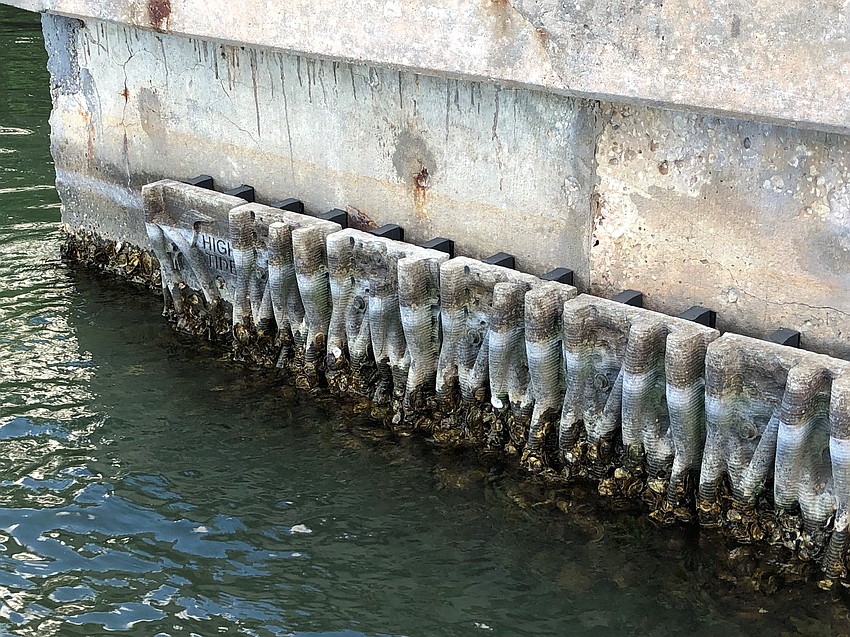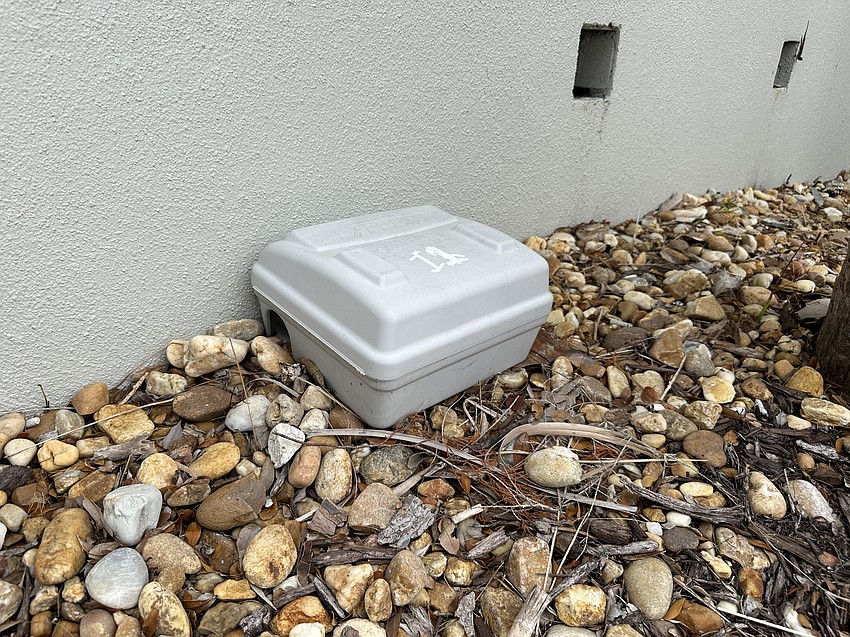About two or three years ago, Longboat Key lacked an organized environmental effort.
That was before the town appointed Support Services Director Carolyn Brown to take charge of environmental initiatives. And Brown really took the ball and ran with it, according to Mayor Ken Schneier.
Now, Longboat Key has the chance to set an example and become “champion” environmental stewards with a newly-introduced Environmental Action Plan.
Brown recently hired Schafer Consulting leads David and Jennifer Shafer to produce the plan for the town. The Town of Longboat Key Environmental Action Plan’s main objective is to focus and prioritize the town’s environmental stewardship activities.
“We’re gonna see probably one of the first big results of that today … we have an enormous environmental footprint to work on,” Schneier said. “And one of the things I thought of as I was reading through it is: ‘Can we take all this and put ourselves out as Longboat Key environmental champions?’”
The Shafers have a long history of similar projects, including the Water Quality Playbook for Sarasota County and the Tampa Bay Estuary Program Comprehensive Conservation and Management Plan.
The plan went through feedback from Brown’s appointed “green team,” consisting of environmental leaders on Longboat Key such as Cyndi Seamon with Longboat Key Turtle Watch and Rusty Chinnis with Suncoast Waterkeeper.
Town staff such as Public Works Assistant Director Charlie Mopps and Director of Planning, Zoning & Building Allen Parsons were also a part of the process.
At the Town Commission’s Nov. 13 planning retreat, Brown and the Shafers presented the finished product to town commissioners. The plan consists of 47 suggested activities that span across a five-year timeframe.
This is the polished list — original ideas had to be revised or removed according to criteria set by the Shafers.
The selected activities were prioritized if they met criteria such as having multiple co-benefits, especially fiscal; if they were relevant to the town’s environmental goals; and progress was likely in five years.
Activities also needed to have a well-defined town role, such as support, coordinate, collaborate or conduct. Those specifically-chosen verbs guide the town as to what actions are needed.
Jennifer Shafer emphasized to town commissioners that this plan is not a resiliency plan. The town already has that included in the comprehensive plan.
“This plan is focused on environmental benefits, protecting and restoring the environment,” she said. “This is not about protecting infrastructure or property. We already have that and other documents. So this is highly focused on environmental protection and restoration.”
The plan consists of activities ranging from investigating the use of electric landscaping tools, to educating the public on various activities that may be better for the environment.
Some are aesthetic, such as encouraging the planting of salt tolerant plants and removing invasive species from town property.
“From an aesthetic perspective, we want to build a culture here and we want to build a culture around what this place actually is,” David Shafer said.
Commissioner-at-Large BJ Bishop raised the question of where the money will come from for some of the plan’s activities that have a price tag, such as installing green infrastructure on town properties and right of ways.
Town Manager Howard Tipton said first he wanted to ensure the environmental plan was something that aligned with the commissioners’ visions and was something everyone wanted to continue to prioritize moving forward.
“We are not there with a budget yet,” Tipton said. “But if these are things that you are supportive of and agree with, then we can begin to do that.”
Overall, Tipton said the plan’s overall benefit is to the community, in being leaders and for self-interest of the town.
For example, by enacting some of the objectives toward protecting water quality, the self-interest component to that is higher property values and more tourism as a result.
“I think as an island community, we recognize the health of our environment, both locally and around the world, impacts us,” Tipton said. “We can be a good leader and be good neighbors when it comes to environmental initiatives.”
It’s also about building a culture around environmental stewardship, Tipton said. Small things like replacing the water fountain in town hall with one that has a water bottle filling station can go a long way towards reducing the use of single-use plastics in town hall.
While there may not be outstanding fiscal savings as a result of these actions, Tipton said actions like replacing town vehicles with hybrids can help.
“If we could get to a neutral position, and it’s better for the environment, why wouldn’t you?” he said.
The environmental action plan’s 47 activities are split up into three main goals, each with a different focus.
Goal 1: Conserve and restore LBK’s ecological biodiversity, function, services and resilience.
Simply put, this goal focuses on the town’s relationship with the natural environment, and what actions can be taken to lessen its environmental impact.
For example, the top activity is to replace or modify existing seawalls, where feasible, to create more natural habitats. This includes the Sarasota Bay Estuary Program’s pilot study at Bayfront Park with mangrove panels placed on the seawall, as well as the future living shoreline project at Bayfront Park.

The mangrove panels, pictured here in Englewood, were designed by Keith Van de Riet. They will be a part of Sarasota Bay Estuary Program’s shoreline project at Bayfront Park.
Under this goal is direction to encourage salt-tolerant native tree canopies. This falls under the subcategory “Conserve and restore native coastal habitats of LBK.”
Salt-tolerant plants are able to withstand salinity, whereas most other plants cannot. When storm surges like Hurricane Idalia come through the island non-salt-tolerant plants would be “burned” and need to be removed.
Native plants like cabbage palm, muhly grass and sea oats are salt tolerant.

Rat bait boxes like this one often contain harmful rodenticides that can sometimes lead to secondary poisoning of raptors and household pets.
Goal 2: Reduce human impacts on LBK’s natural environment.
The second goal relates to what humans can do to reduce environmental impacts, whether that’s educating residents on more environmentally-friendly actions or the town stepping up.
A big chunk of these activities deal with clean energy initiatives, such as continuing to replace town vehicles with hybrids or electric vehicles.
Another action that was discussed at the retreat was monitoring the feasibility of replacing town gasoline landscaping equipment with electric equipment. Town staff previously looked into this, but it was determined that it was not feasible due to the long hours worked by public works and short battery charges.
But the wording on that is specific to say “monitor and pilot,” and it was agreed that the town would continue to look into the situation as technology evolves.
Goal 3: Build capacity of LBK and partners to conserve and restore LBK ecosystems and to collaborate on environmental initiatives.
The last goal is the broadest, but focuses mostly on building and sustaining strong relationships with local organizations.
For example, one action is to support the SBEP’s Comprehensive Conservation and Management Plan.
Another action is to identify opportunities for collaborative grant opportunities.